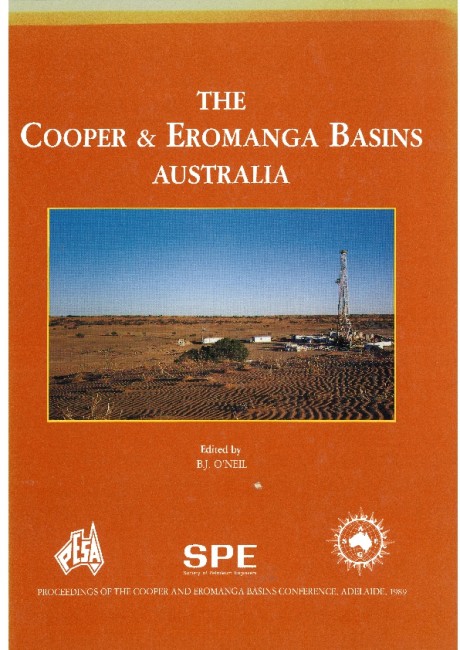Publication Name: The Cooper & Eromanga Basins Australia
Authors: G. B. Salter
Date Published: June 1989
Number of Pages: 21
Reference Type: Book Section
Abstract:
The Tirrawarra Field is located in the South Australian sector of the Cooper Basin and produces gas from thePatchawarra Formation and oil and associated gas from the Tirrawarra Sandstone. This paper addresses the role of fracture stimulation in the development of the Tirrawarra oil reservoir only.
Oil production commenced in 1983 and a pilot gas injection scheme was initiated in 1984 to arrest the decline
in production. The success of this scheme led to the implementation of an expanded enhanced oil recovery (EOR) scheme involving a pattern flood of the higher quality areas of the reservoir. Moderate reservoir quality has required some in-fill drilling. However, hydraulic fracture stimulation has been a major factor in attaining
current productivity.
The first fracture stimulation treatment on the Field was performed in 1971 although the majority of treatments
have been performed on development wells since 1981. A total of 39 treatments have been performed to date
including three re-fractures. Typical treatments consist of placing 100 000-180 000 Ibm (45 000-82 000 kg) of sand and/or intermediate strength proppant with 50 000-100 000 gal (190-380 m3) of water-based crosslinked gel.
The results of post-fracture well test analyses indicate reasonable fracture properties are achieved and stabilised productivity/injectivity index increases typically average between two and three times. It is estimated that the number of unstimulated wells required to attain current productivity would render the project uneconomic. Specifically, fracture stimulation has enabled the EOR scheme to go ahead by increasing productivity and injectivity in the EOR pattern and increased economic reserves in the lower permeability areas of the reservoir. The success of fracture stimulation has therefore been fundamental to the development of the Tirrawarra Field.


